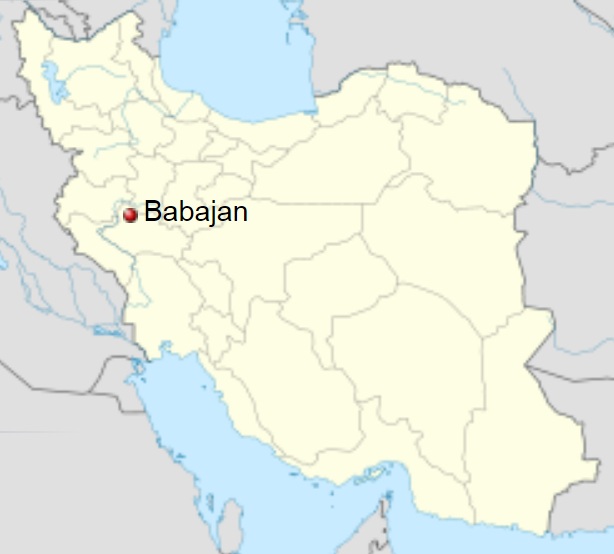
| BABAJAN TEPE
Baba Jan Tepe, Iran
Ancient pottery from Baba Jan Tepe, around 750 B.C. Country
: Iran
Coordinates : 34°01'25 N 47°56'09 E
Baba Jan Tepe (Tappa), an archeological site in north-eastern Lorestan Province (34° north latitude, 47° 56’ east longitude), on the southern edge of the Delfan plain at approximately 10 km from Nurabad, important primarily for excavations of first-millennium B.C. levels conducted by C. Goff from 1966-69. Work concentrated on two mounds joined by a saddle. The East Mound (85 m in diameter, 9 m high) yielded a series of first-millennium B.C. buildings (Baba Jan III-I) above Bronze Age (Baba Jan IV) graves. On the Central Mound (120 m in diameter, 15 m high), excavation concentrated on the Baba Jan III Manor on the summit; an 8 x 6 m Deep Sounding provides a partial late fourth- to mid-second-millennium B.C. sequence.
Archaeology
:
Baba Jan IV. In the Deep Sounding on the Central Mound, two levels of domestic architecture (level 5, 2300-2100 B.C. and level 4, 1800-1500 B.C.) were separated by a period of abandonment during which four burials were dug into the area. Four other Baba Jan IV graves were cut into virgin soil on the East Mound; these date to the late third (Goff, 1976, fig. 11.10-13, 16-18) and mid-second millennium B.C. The assemblage is comparable to that of period III at Godin Tepe.
Baba
Jan III :
Baba Jan III pottery, long known as Genre Luristan, was a handmade, turntable-finished buff ware with distinctive decoration in a thick red-brown matte paint. Typical motifs included ladders and pendant triangles with hatching or crosshatching. Common vessel shapes were simple: wide-bodied jars with narrow necks, small bowls with incurved rims and horizontal loop handles, conical bowls, and cups. A range of iron weapons and tools were found, but classic Luristan bronze artifacts were uncommon.
Baba
Jan II :
The Genre Luristan pottery of Baba Jan III continued with simpler decoration, but small quantities of a new type of wheel-made buff pottery with small golden mica inclusions appeared. The most common shapes were deep bowls with a thickened rim and horizontal handle, double-handled jars, and jars with a vertical handle and tubular spout with trefoil-mouth. This ware and characteristic shapes are very similar to Tepe Nush i Jan level I (Malayer plain). Baba Jan II probably dates to the seventh century B.C.
Baba
Jan I :
Architectural decoration, 1st millennium B.C.
Architectural decoration, 1st millennium B.C.
Architectural decoration, 1st millennium B.C.
Source :
https://en.wikipedia.org |




